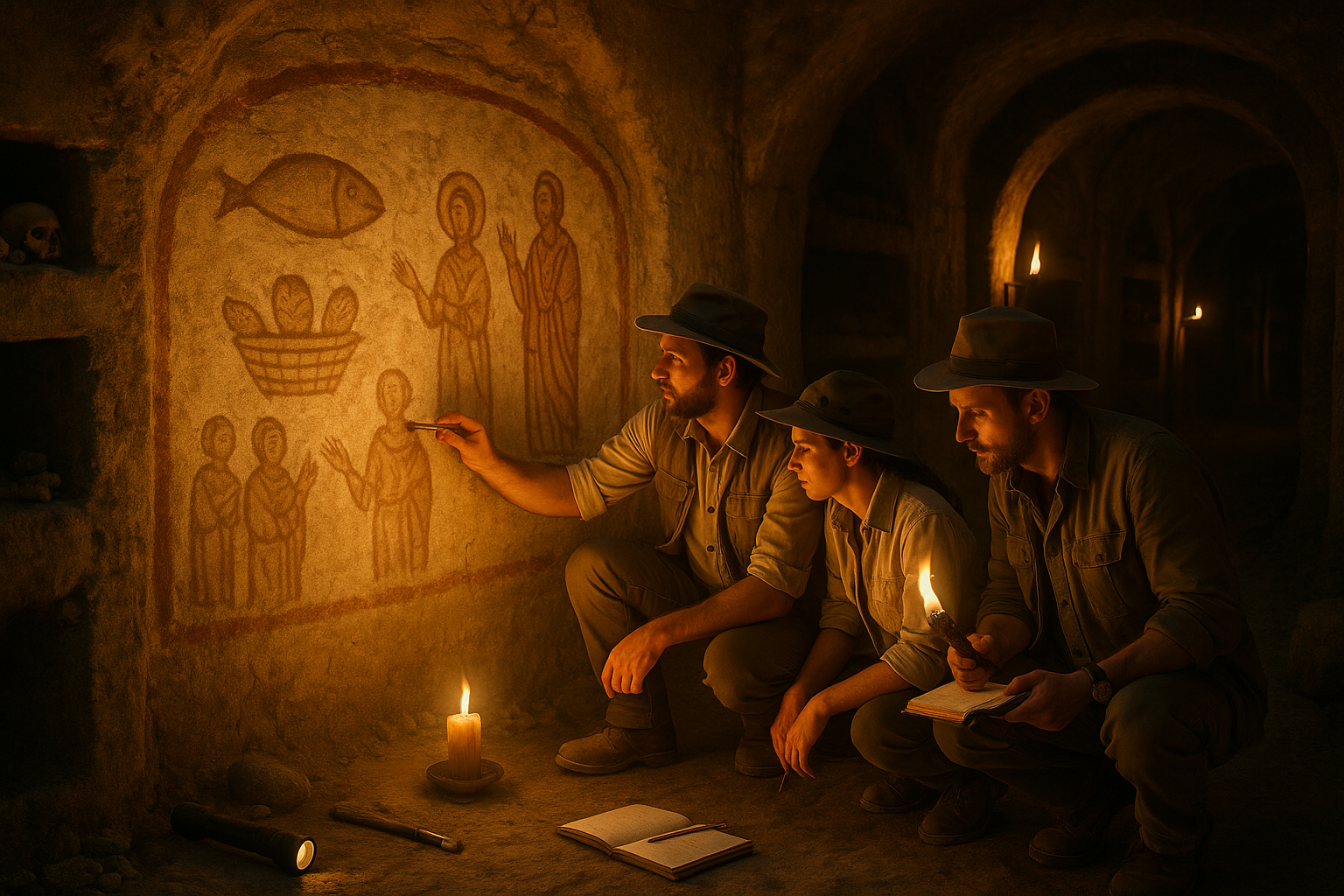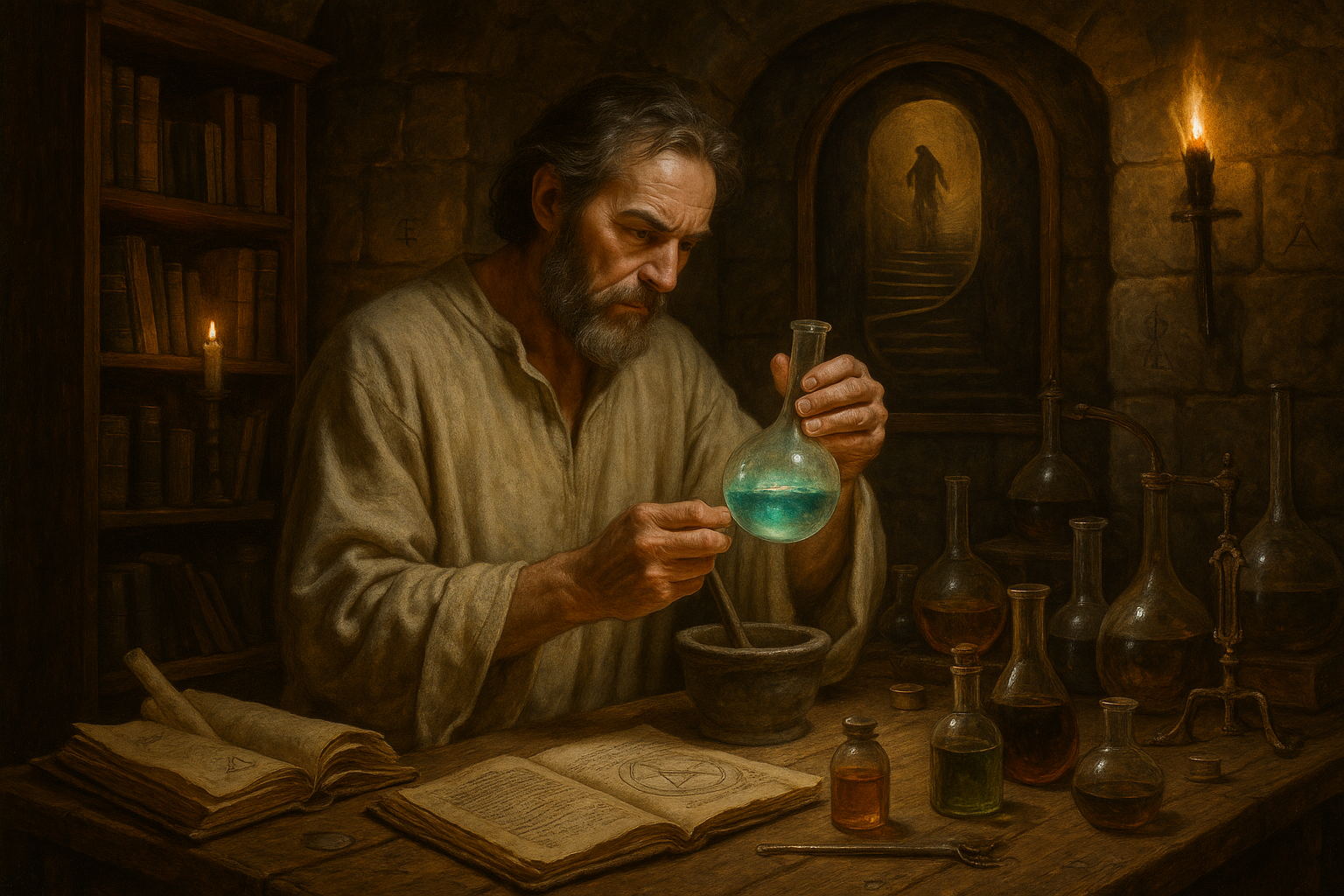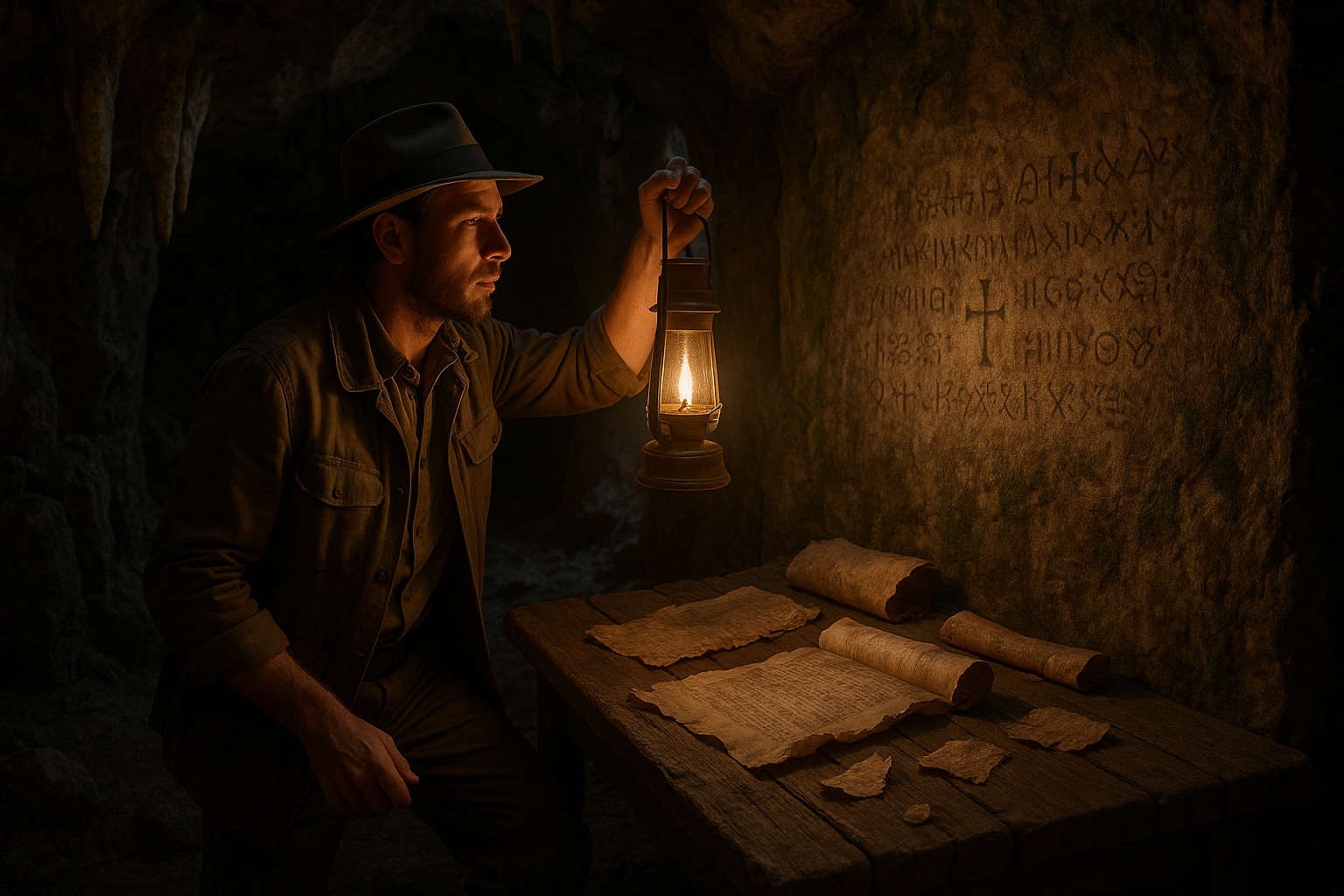In the dimly lit corridors beneath ancient cities, a fascinating chapter of history lies hidden, waiting to be uncovered. The catacombs, these underground burial sites, offer more than just a resting place for the departed; they hold the whispers of early Christian rituals, shrouded in mystery and intrigue. 🕯️ As we delve into the depths of these subterranean labyrinths, we embark on a journey to uncover the secrets of catacomb rituals in early Christianity, revealing practices that shaped the faith of countless believers.
The allure of the catacombs lies not only in their historical significance but also in the stories etched into their walls. These underground passages, stretching for miles beneath the bustling streets of ancient Rome and other cities, served as sacred spaces for the early Christian community. At a time when Christianity was a fledgling faith facing persecution, these hidden chambers offered a refuge—a place where believers could gather, worship, and practice their faith away from prying eyes.
One might wonder, what exactly were these catacomb rituals? Why were they conducted in such secrecy? And how did they influence the development of early Christian traditions? To answer these questions, we must delve into the very heart of these ancient practices, exploring the beliefs and customs that guided the early Christians in their quest for spiritual solace and community.
Our exploration will take us through several key aspects of catacomb rituals, beginning with the significance of these underground sites as both burial grounds and places of worship. We will examine how the architecture of the catacombs was carefully designed to accommodate these dual purposes, creating a sacred environment that resonated with spiritual symbolism. 🕊️
Next, we will uncover the nature of the rituals themselves. From the celebration of the Eucharist to the commemoration of martyrs, these practices were imbued with profound meaning and devotion. We will delve into the symbolism of the rituals, exploring how early Christians used these ceremonies to express their faith, honor their deceased, and strengthen their sense of community in the face of adversity.
Moreover, we will explore the role of art and iconography in the catacombs. The walls of these subterranean chambers are adorned with vivid frescoes and inscriptions, providing valuable insights into the religious beliefs and practices of the time. These artworks served not only as decoration but also as a means of conveying theological messages, reinforcing the teachings of Christianity through visual storytelling. 🎨
As we journey through history, we will also consider the broader socio-political context in which these catacomb rituals developed. The early Christians lived under the shadow of a Roman Empire that was often hostile to their beliefs. The catacombs, therefore, became not just a place of worship, but a symbol of resistance and resilience—a testament to the enduring strength of faith in the face of persecution.
Finally, we will reflect on the lasting impact of these early Christian rituals on the development of Christian liturgy and tradition. The practices that began in the dim corridors of the catacombs laid the groundwork for many aspects of modern Christian worship. By examining these ancient rituals, we gain a deeper understanding of the roots of Christian spirituality and the ways in which faith has been practiced and preserved over the centuries.
Join us as we unravel the mysteries of the catacombs and bring to light the hidden rituals of early Christianity. Through this exploration, we hope to shed light on a fascinating and often overlooked chapter of religious history, revealing the enduring power of faith and community in shaping the spiritual landscape of the world. 🌟
As we descend into these ancient corridors, we embark on a journey not only through the physical remnants of a bygone era but also through the spiritual legacies that continue to inspire and resonate with believers today. Prepare to uncover the secrets of the catacombs, where history and faith intertwine to tell a story of devotion, resilience, and hope.

Conclusion
In conclusion, the unveiling of catacomb rituals sheds light on one of the most mysterious intersections between death, faith, and the human need for transcendence. Hidden beneath the surface of ancient cities, these subterranean sanctuaries were more than burial spaces—they were realms of spiritual continuity where the living communed with the departed. Each carving, relic, and inscription tells a story of devotion, secrecy, and the timeless belief that death was not an end, but a passage to renewal.
Through the careful excavation and interpretation of these underground worlds, archaeologists and historians have come to understand that catacomb rituals were expressions of hope amid mortality. Whether in the early Christian crypts of Rome, the Egyptian necropolises, or the Mesoamerican underworld chambers, these rites reflected a shared human longing: to maintain connection with the sacred and to find meaning in the mysteries of the afterlife. The offerings, prayers, and symbolic markings found within these tombs served as bridges between the visible and the unseen—a dialogue between earth and eternity.
What modern science reveals is that these rituals were as much about the living as about the dead. They reinforced community bonds, spiritual identity, and the continuity of cultural memory. The catacombs functioned as sacred archives, preserving the beliefs, fears, and aspirations of generations who saw the underworld not as a place of despair, but of transformation.
As we unveil the hidden layers of these subterranean traditions, we confront our own fascination with mortality. The catacombs remind us that across civilizations and epochs, humanity has always sought to ritualize death—to make peace with the unknown through ceremony, faith, and art. In these dimly lit corridors of history, we find both the fragility and the resilience of the human spirit.
Ultimately, “Catacomb Rituals Unveiled” is not just a journey into ancient burial chambers—it is a revelation of humanity’s enduring dialogue with death and the divine. The catacombs stand as eternal symbols of remembrance and reverence, echoing the universal truth that in confronting the darkness, we often rediscover the light.



